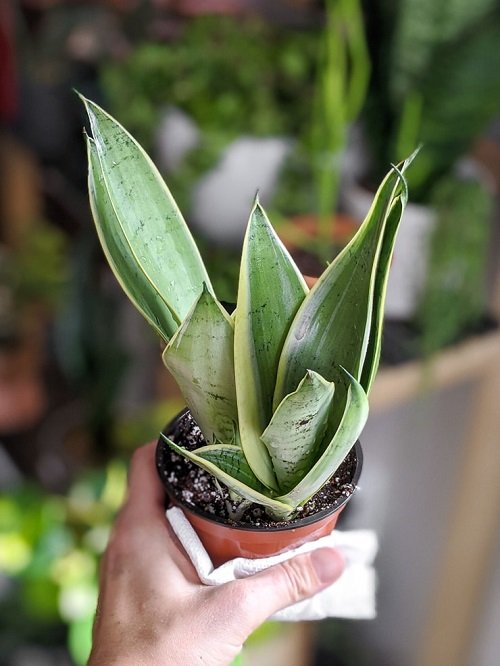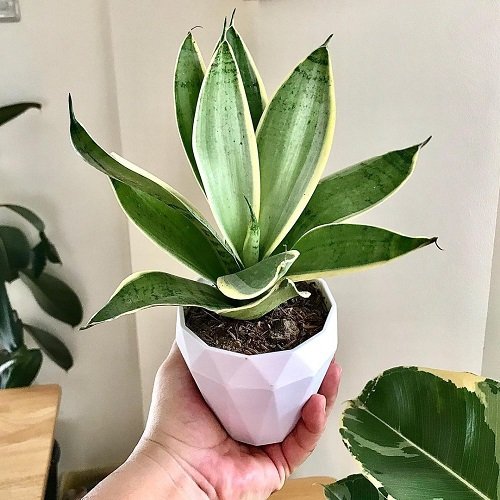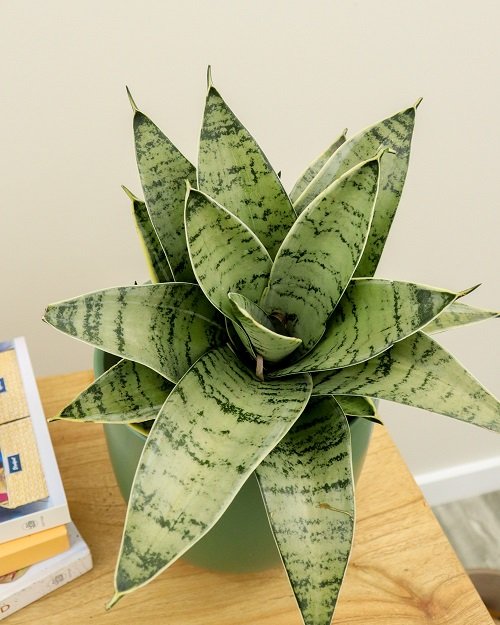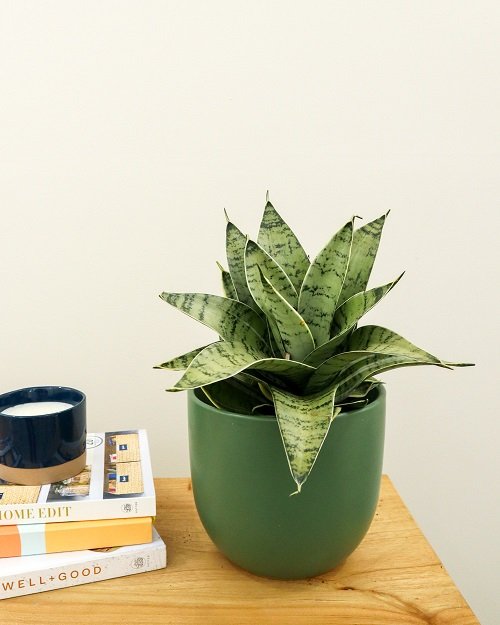If you’re wondering How to Grow and Take Care of the Night Owl Snake Plant, then you are at the right place! Let’s dive into the details!
The Night Owl Snake Plant is a hybrid of two Sansevieria species: Sansevieria trifasciata and Sansevieria ‘Black Robusta.’ It is a great choice for indoor gardeners who want to add a touch of exotic beauty to their homes.
Discover Rare Snake Plant Varieties
Night Owl Snake Plant Information
The Night Owl Snake Plant (Sansevieria trifasciata ‘Night Owl’) is a species of the Sansevieria family. It is a low-maintenance, drought-tolerant plant that is native to West Africa.
It is known for its long, stiff, dark green leaves with light streaks and yellow edges. The leaves can grow up to two feet tall and can reach a width of one foot.
Night Owl Snake Plants are known for their air-purifying qualities and are believed to reduce stress and increase focus. They require minimal care and can survive in low lighting and temperatures.
Propagating Night Owl Snake Plant

- Division: The Night Owl Snake Plant can be easily propagated by division. This is the most common and simplest method of propagation. Simply cut the plant into two or more sections with a sharp knife, making sure to leave enough roots and foliage in each section. Replant the sections in well-draining soil in individual pots.
- Leaf cuttings: Leaf cuttings can also be used to propagate the Night Owl Snake Plant. Cut off a healthy leaf from the plant and allow it to dry for a few days. Once dry, place the leaf in well-draining soil, making sure that the leaf is buried at least halfway in the soil. Keep the soil lightly moist, and new plants should sprout from the nodes on the leaf in a few weeks.
Best Pot Size
The best pot size for a Night Owl Snake Plant is an 8-12 inches container. This size allows for adequate drainage and also provides plenty of room for root growth.
Requirements for Growing Night Owl Snake Plant
Sunlight
The plant prefers bright, indirect light but can tolerate low-light conditions as well. Avoid direct sunlight, as it can scorch the leaves. You can place your snake plant anywhere in the house – where no direct light comes!
Tip: Ensure it gets 2-3 hours of direct morning sunlight for the best growth.
Soil
Use a high-quality potting mix that contains perlite or sand, moss, and some garden soil – to improve drainage. Alternatively, you can also use the soil mix of a cactus plant, which you may purchase readymade from stores.
Avoid using heavy garden soil, which can retain too much water and cause the roots to rot.
Watering
Water it sparingly, allowing the soil to dry out completely between waterings. Overwatering can lead to root rot, which can be fatal for the plant.
During the winter months, reduce the watering frequency to once every few weeks.
Temperature and Humidity
It prefers moderate temperatures between 60-75°F (15-24°C) and can tolerate low humidity. Keep the plant away from cold drafts and air conditioning vents.
Find How to Grow Snake Plant in Hanging Basket
Night Owl Snake Plant Care

Fertilizer
Fertilize once a month during the growing season (spring and summer) with a balanced liquid fertilizer. Do not fertilize during the winter months.
Make sure to dilute the fertilizer to half the recommended strength and water your plant before and after fertilizing.
You should also avoid fertilizing in the winter when the plant is dormant, as this can cause damage to the plant.
Re-potting
As the plant grows slowly, it does not need to be repotted often. Do not rush – instead, re-pot only when the plant has outgrown its container, and you see the roots on the topsoil or notice them coming out from the drainage hole of the container.
Pruning
Pruning a Night Owl Snake Plant is not necessary but can be done for cosmetic reasons or to remove any dead or damaged leaves. Use a clean, sharp pair of scissors or pruning shears to make a clean cut at the base of the leaf.
Pests and Diseases
Common pests of the night owl snake plant include mealybugs, aphids, spider mites, and scale insects. These pests can be managed by careful monitoring, regular cleaning, and periodic applications of insecticidal soap or neem oil.
Common diseases of the night owl snake plant include root rot, leaf spot, and crown rot. These can be prevented by proper watering and drainage and by avoiding over-fertilizing the plant.
If the plant does become infected, it is important to treat it promptly with a fungicide.




